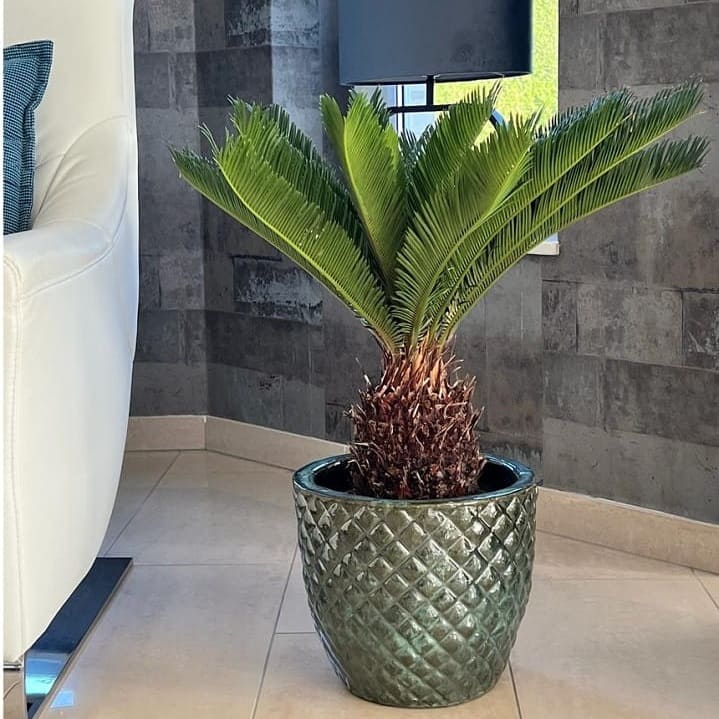
Why is my indoor palm tree becoming brown?
Indoor palm trees are beautiful plants that can provide a tropical ambiance at your home. But what should you do if you notice that your indoor palm tree is turning brown? It can be a sign that something is wrong with the care of the plant. MyPalmShop will explain you more about the potential causes of the brown leaves, as well as what you can do about it.
Cause 1: insufficient water
One of the most common causes for brown leaves is too little water. Palm trees often need a lot of water, and if they do not receive enough water for too long, they may wilt and turn brown. This is particularly a problem during summer, when the plant uses more water.
Solution
Provide your indoor plant with water regularly, so that the soil remains humid at all times. Check the soil regularly by digging a few centimetres into the soil with your finger. If it feels dry, you should provide water, but avoid overwatering, as that is also harmful. It is better to provide a little bit less water than too much.
Cause 2: intense direct sunlight
Most indoor palm trees appreciate light, but too much or too intense direct sunlight can cause the leaves to burn, making the leaves turn bronze. This is a common issue during summer, when the sunlight is brightest and most intense.
Solution
Place your indoor plant on a spot where it receives enough sunlight, but without putting it in direct sunlight. A window at the north or east, for example, could be ideal. If your palm tree has already received too much sunlight, relocate your palm to a cooler spot and provide some additional water to help the recovery process. Keep in mind, though, that this does not apply to every palm. Read about your palm tree’s preferred location on the product page before relocating it.
Cause 3: too little humidity
Indoor palm trees are used to a higher air humidity, so if the air in your home is somewhat dry, it may also cause leaf browning. This is especially a problem during winter, when heaters are turned on and the air humidity drops.
Solution
Increase the air humidity in your home by using a humidifier or by placing bowls of water on top of your windowsill above a heater. You can also spray your palm tree’s leaves regularly with water to increase the air humidity around the plant.
Cause 4: Pests and diseases
Brown le;aves can also be caused by pests and diseases, such as red mites or fungi. If your palm tree is infected, the leaves can turn yellow or brown, and if left untreated, they may even die off.
Solution
Check your palm tree regularly for signs of pest and diseases. If you see something suspicious, it is important to take action as soon as possible. Remove infected leaves and use a suitable treatment. We also recommend checking your plants before placing any indoors, so you can avoid infected other indoor plants as well.
Cause 5: a shortage of nutrients
If the leaves of your palm tree are turning brown, it may also be it simply lacks sufficient nutrients. Palm trees need regular fertilizing to stay healthy. If they do not receive enough nutrients, the leaves can also turn brown.
Solution
Provide your palm trees with a special fertilizer, that contains all the nutrients that your palm tree needs. You can choose special palm fertilizers, which are developed to help you get most out of your palm tree. Just like watering, make sure to not provide too much. Too much fertilizer can also cause problems with the growth of your palm. Always follow the instructions on the palm fertilizer to avoid problems.
Conclusion
If your indoor palm has brown leaves, it may be a sign something is wrong with the care of your plant. This may be due to too little water, too much direct sunlight, not enough humidity, diseases or pests or a shortage of nutrients. By identifying the problems in a timely manner, you can take proper action as soon as possible to help your palm tree recover. Don’t forget that every plant is different and may have different needs. Read about your palm tree to understand its needs so that you can provide a good and healthy care. That way, your indoor palm tree can be a great addition to your interior.





Comments (0)